History
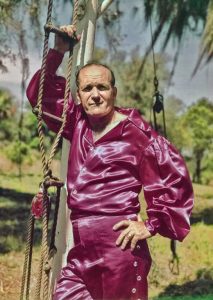 These days, we are all pretty used to stunt people who take wild chances to prove their prowess. It happens all the time. Whether it’s television stunts, circus stunts, or the daredevil stunts, they all have one thing in common…they live to show off their ability to perform these stunts under pressure…even if it costs them their lives, and it has. Many people have heard of Evel Knievel who was famous for jumping his motorcycle over everything. And then there were the car jumps on the Dukes of Hazard. But, really I think the circus was the real beginning of stunts. I could be wrong, but the tight rope walkers and the trapeze stunts, often without a net while a seemingly more tame version of stunt work, were still stunts and still dangerous.
These days, we are all pretty used to stunt people who take wild chances to prove their prowess. It happens all the time. Whether it’s television stunts, circus stunts, or the daredevil stunts, they all have one thing in common…they live to show off their ability to perform these stunts under pressure…even if it costs them their lives, and it has. Many people have heard of Evel Knievel who was famous for jumping his motorcycle over everything. And then there were the car jumps on the Dukes of Hazard. But, really I think the circus was the real beginning of stunts. I could be wrong, but the tight rope walkers and the trapeze stunts, often without a net while a seemingly more tame version of stunt work, were still stunts and still dangerous.
One stuntman, Karl Wallenda, born on January 21, 1905, was a German-American high wire artist, and a member of The Great Wallendas, with whom he began performing at the age of six. His family became a daredevil circus act which performed dangerous stunts, often without a safety net. They soon became world famous, and with fame came more and more difficulty of stunts, and more danger. Their stunts were exclusively high wire, and not trapeze, but they were elaborate and demanded the highest level of skill and bravery. I doubt if any stunt performer really thinks of their own demise very much, but I suppose it is a thought that must enter their minds periodically.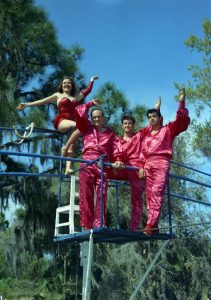
The Great Wallendas were famous throughout Europe for their four-man pyramid and cycling on the high wire. In 1928, Wallenda moved the act to the United States where they became The Flying Wallendas. There they performed in ever-increasingly difficult stunts, as freelancers. In 1947 they developed the unequaled three-tier 7-Man Pyramid. Karl Wallenda had the idea since 1938, but it took until 1946, when he and his brother Hermann developed it and had the right acrobats for it. Prior to that time, the Wallendas had been famous for the four-man pyramid and cycling on the high wire. In 1962, in Detroit, the Wallendas fell during a performance. Two members of the troupe were killed and Karl Wallenda’s son, Mario was paralyzed. Still, after such tragedies, the family determined that the show must always go on, usually after some regrouping. Another performer, Riette fell during a performance in Omaha, Nebraska, and was killed a year after the first tragedy. Karl decided not to continue that part of the act, but his daughter, Carla wanted the act, and after being told no, set out to perform it herself. When he saw her determination, Karl allowed her to have it, and she performed it without mishap. A made-for-TV movie about the family came out in 1978 and starred Karl Wallenda. The movie depicts the act’s comeback after a fatal accident involving several family members during 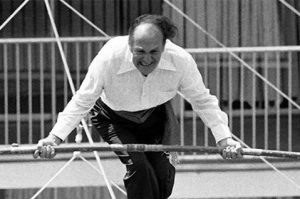 a performance. It looked like the great American comeback, but Wallenda was killed in a high wire accident in just 38 days after it was first broadcast. On March 22, 1978, Wallenda was attempting a walk between the two towers of the ten-story Condado Plaza Hotel in San Juan, Puerto Rico, on a wire stretched 121 feet above the pavement. The winds were high that day, and as a result that, and an improperly secured wire, he lost his balance and fell during the attempt. Wallenda’s face depicts the moment of realization and anguish when he knew that he was doomed. Wallenda was pronounced dead after his body arrived at the hospital. Karl Wallenda was 73 years old.
a performance. It looked like the great American comeback, but Wallenda was killed in a high wire accident in just 38 days after it was first broadcast. On March 22, 1978, Wallenda was attempting a walk between the two towers of the ten-story Condado Plaza Hotel in San Juan, Puerto Rico, on a wire stretched 121 feet above the pavement. The winds were high that day, and as a result that, and an improperly secured wire, he lost his balance and fell during the attempt. Wallenda’s face depicts the moment of realization and anguish when he knew that he was doomed. Wallenda was pronounced dead after his body arrived at the hospital. Karl Wallenda was 73 years old.
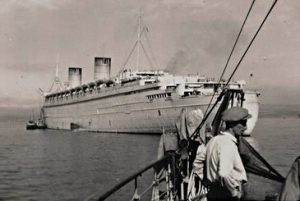 As ocean liners began to be built, sailing the worlds oceans suddenly went from an ordeal that was tolerated in order to improve their lives, to a way to see the world in luxury and relative speed. Emigration to the United States brought with it the need for many great ocean liners, and as they began to appear, the world became mobile. Prior to these ocean liners, it wouldn’t have been possible to really populate the new world. Europe was overcrowded, and the United States was underpopulated. Ocean liners like the Queen Mary, the Mauritania, the Lusitania, the Queen Elizabeth all made travel to the United States and even back to Europe a luxury.
As ocean liners began to be built, sailing the worlds oceans suddenly went from an ordeal that was tolerated in order to improve their lives, to a way to see the world in luxury and relative speed. Emigration to the United States brought with it the need for many great ocean liners, and as they began to appear, the world became mobile. Prior to these ocean liners, it wouldn’t have been possible to really populate the new world. Europe was overcrowded, and the United States was underpopulated. Ocean liners like the Queen Mary, the Mauritania, the Lusitania, the Queen Elizabeth all made travel to the United States and even back to Europe a luxury.
During the world wars, the military commandeered these cruise ships for troop transports, and also for munitions transports. It was not always safe for these ships to be carrying civilian passengers, as was seen with the sinking of the Lusitania, so after a time the cruise ships had to stop their civilian trips and become troop transports exclusively. They had to stop, because whether the ship had munitions on it or not, it was sunk with civilian passengers onboard.
At a time when there were no passenger planes, ocean liners provided the only pathway to cross the oceans. Once war in Europe had begun, many of the great ocean liners of the period withdrew from transatlantic crossings. However, they still remained at sea. Wartime saw ocean liners converted into troopships, carrying thousands of soldiers on a single trip, from bases in the United States to bases in the theaters in Europe, Africa, and Japan. Some of the most famous names in steamship history, including Mauretania, Olympic, Leviathan, 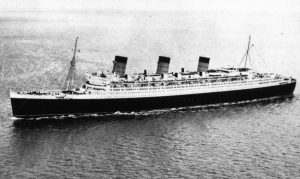 Nieuw Amsterdam (II), Queen Mary and Queen Elizabeth II were among those converted to troopships during times of war. These ships were a critical part of military operations. Without their support, transporting troops, equipment, and munitions would have taken far too long to do any good. These ships were the fastest ships out there at that time in history, and time was of the essence.
Nieuw Amsterdam (II), Queen Mary and Queen Elizabeth II were among those converted to troopships during times of war. These ships were a critical part of military operations. Without their support, transporting troops, equipment, and munitions would have taken far too long to do any good. These ships were the fastest ships out there at that time in history, and time was of the essence.
Of course, these ships faced the threat of submarine or airborne attack, so speed was the greatest defense the ship could have, but they couldn’t just start using the ships. These ships had to go through a process of preparation before they could be a transport ship. All of the items that were not needed for sustaining or berthing the maximum number of troops, were among the first things to go. Furniture, paintings, pianos, and everything else not needed for war would be removed and stored on land, to be returned to the ship after the war was over. The empty space was then filled with hammocks and cots for the soldiers to sleep on. They mounted guns on the decks to provide defensive capability. Of course, these liners could not act as a warship. They were just not designed for that, but a few well placed shots, might deter some of the smaller boats like U-boats from making a surface attack.
Camouflage was considered a critical part of the liners ability to survive in hostile waters. They applied “dazzle paint” to the hulls of these ocean liners. Oddly, the paint closely resembling zebra stripes!! They reasoned that alternating dark and light stripes would obscure the size, speed, heading, and type of ship when viewed from a distance. I can’t picture that exactly, and apparently it wasn’t very effective either. I guess all that it really did 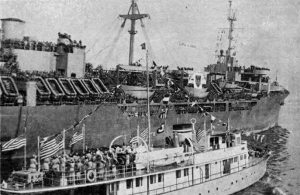 was to give a false sense of security to the soldiers on board.
was to give a false sense of security to the soldiers on board.
Following the war, and ship that survived their wartime duties was restored to its former look and feel so that it could continue with its pre-war duties. Unfortunately, many of these beautiful ocean liners were lost to enemy fire during the war. Sadly, there are no real examples of these wartime liners turned troop transports, but the Queen Mary is in dry dock in Long Beach, California. Visitors can take a tour, and get a real feel for those cramped quarters. Visitors can imagine the soldiers felt as they crossed the North Atlantic, knowing that their ship was a prized target for the enemy.
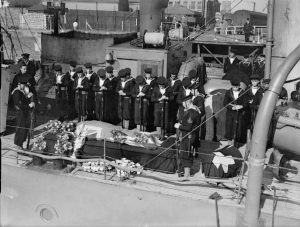
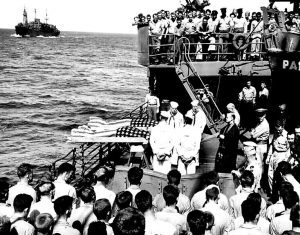 Most of us really don’t want to think about our own funeral, but when men are at war, death and a funeral become a subject they have to think about. They don’t want to, but they have no guarantee that they will return home, so they are faced with the possibility of death every day. In the Navy, during wartime, at least in the past, if not currently, it was common practice to bury the casualties at sea. That is such a hard concept for me, and yet there isn’t really anything wrong with it. I guess that having no grave site to visit is probably the thing that is bothering me the most. It’s not that I spend days and hours at the cemetery, but rather that I know exactly where my loved ones are laid to rest, or where I will be.
Most of us really don’t want to think about our own funeral, but when men are at war, death and a funeral become a subject they have to think about. They don’t want to, but they have no guarantee that they will return home, so they are faced with the possibility of death every day. In the Navy, during wartime, at least in the past, if not currently, it was common practice to bury the casualties at sea. That is such a hard concept for me, and yet there isn’t really anything wrong with it. I guess that having no grave site to visit is probably the thing that is bothering me the most. It’s not that I spend days and hours at the cemetery, but rather that I know exactly where my loved ones are laid to rest, or where I will be.
Burials at sea have been going on as long as men have been going to sea. For logical reasons, a body could not be kept on board a ship for the remainder of the cruise, so the death had to be dealt with. In early days, the body was wrapped in a shroud, usually made of sailcloth, but later caskets were also used. If the family has decided to use a casket instead of a shroud for the burial at sea, the casket must be a metal casket, because it must be able to deteriorate in the marine environment. I suppose that makes sense, because eventually ships and planes return to the environment around them. The sea eventually claims what doesn’t belong there naturally. Of course, the timeframe involved in the deterioration of the casket would be well beyond the lifetime of the families, so I guess that would make it easier to think about it.
Military burials at sea are performed with much pomp and circumstance. The honor of the soldier is held in the highest regard. The personnel who participate or even attend the services must wear the Uniform of the Day. The commanding officer tries to have a chaplain of the appropriate faith perform the ceremony, but if that is not an option, the service may be read by the commanding officer or an officer designated by him/her. The service is much like a church service, with a eulogy, firing squad salute, pall bearers, and a flag ceremony. When everything is finished, the body is moved to the side of the ship of a plank and then the plank is raised so that the casket or shrouded body slides off into the sea.
Of course, when a ship sinks, there is an instant burial at sea for all who do not survive. Many times the ship is not found for years, so the ship becomes the casket for all those who lost their lives. The family can seek to have the body recovered when the ship is found, but often that does not happen. The USS Arizona is probably 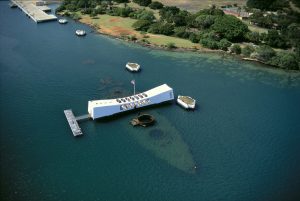
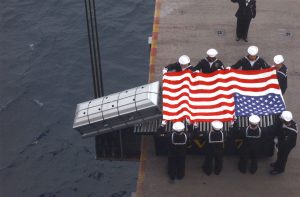 one of the most well known casket ships in the world, and while it was easy to see and get to, many of the families chose to leave their loved ones there. The USS Arizona went down with 1,177 Sailor and Marines on board. The ship marks the final resting spot of 1,102 of the original 1,177. Also, beginning in 1982, the US Navy has allowed surviving crew members to be “buried” on the Arizona.
one of the most well known casket ships in the world, and while it was easy to see and get to, many of the families chose to leave their loved ones there. The USS Arizona went down with 1,177 Sailor and Marines on board. The ship marks the final resting spot of 1,102 of the original 1,177. Also, beginning in 1982, the US Navy has allowed surviving crew members to be “buried” on the Arizona.
 Since man had power on the earth, man has also had power outages. Power outages are one thing, but rolling blackouts are another thing altogether. “A rolling blackout, also known as rotational load shedding, feeder rotation, or a rotating outage is an intentionally-engineered electrical power shutdown in which electricity delivery is stopped for non-overlapping periods of time over different parts of the distribution region.” This type of shutdown…rolling blackouts…are a supposed to be a last-resort measure used by an electric utility company to avoid a total blackout of the power system. I can understand that in a serious heat wave, even though it is a dangerous maneuver, and I can even understand it in an overload caused by an unexpected cold snap, even thought that is also seriously dangerous.
Since man had power on the earth, man has also had power outages. Power outages are one thing, but rolling blackouts are another thing altogether. “A rolling blackout, also known as rotational load shedding, feeder rotation, or a rotating outage is an intentionally-engineered electrical power shutdown in which electricity delivery is stopped for non-overlapping periods of time over different parts of the distribution region.” This type of shutdown…rolling blackouts…are a supposed to be a last-resort measure used by an electric utility company to avoid a total blackout of the power system. I can understand that in a serious heat wave, even though it is a dangerous maneuver, and I can even understand it in an overload caused by an unexpected cold snap, even thought that is also seriously dangerous.
I don’t know a lot about the energy industry, but I do know that some of the recent cuts in types of energy resources are very dangerous when it comes to making sure that we have enough energy for our country. It  seems that these states who don’t regularly need large amounts of energy for heating and cooling, don’t have a way to “stockpile” any either. Rolling blackouts are used as a response strategy to cope with reduced output beyond reserve capacity from power stations taken offline unexpectedly, such as an extreme weather event. So, when an emergency occurs, their solution is to have these rolling blackouts. California has done this for years.
seems that these states who don’t regularly need large amounts of energy for heating and cooling, don’t have a way to “stockpile” any either. Rolling blackouts are used as a response strategy to cope with reduced output beyond reserve capacity from power stations taken offline unexpectedly, such as an extreme weather event. So, when an emergency occurs, their solution is to have these rolling blackouts. California has done this for years.
The theory behind the rolling blackouts is a “measure of demand” response. If the demand for electricity exceeds the power supply capability of the network, it’s time to have a planned blackout. Rolling blackouts might be limited to a single city or state, or they can be district or nationwide. The whole thing depends on the network and the stockpile of energy resources. Rolling blackouts generally result from two causes. These are insufficient generation capacity or inadequate transmission infrastructure to deliver power to where it is needed.
For California the rolling blackouts had began on June 14th, 2000 due to a heatwave. Other dates for rolling blackouts in those first couple of years were January 17-18, 2001, March 19-20, 2001, and May 7-8, 2001. These were the beginning dates of the California electricity crisis which included extremely high prices and 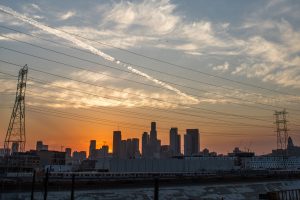 rolling blackouts. In reality, the “crisis” was a direct result from the manipulation of energy of a partially deregulated California energy system by companies like Enron and Reliant Energy. I wonder too, if the mismanagement wasn’t also on the part of the state’s mismanagement. The recent power outages in Texas from the freezing weather were also rolling blackouts, and the problems they caused were far worse than the California rolling blackouts, because of all the things that froze up from the severe cold. The reality is that one way or the other, our government has to stop limiting the production of our energy resources. That is my opinion, and I’m sure some would disagree, but these rolling blackouts are ridiculous.
rolling blackouts. In reality, the “crisis” was a direct result from the manipulation of energy of a partially deregulated California energy system by companies like Enron and Reliant Energy. I wonder too, if the mismanagement wasn’t also on the part of the state’s mismanagement. The recent power outages in Texas from the freezing weather were also rolling blackouts, and the problems they caused were far worse than the California rolling blackouts, because of all the things that froze up from the severe cold. The reality is that one way or the other, our government has to stop limiting the production of our energy resources. That is my opinion, and I’m sure some would disagree, but these rolling blackouts are ridiculous.
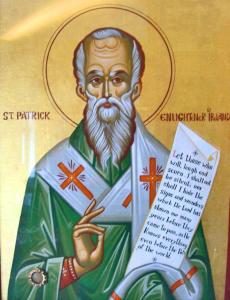
 Most days in our lives are normal…ordinary. We get up, go to work, cook meals, got to sleep. It’s all ordinary, and it could be boring, if we let it. I suppose that might be why we have a few special days that are all about fun. Saint Patrick’s Day is one of those days…at least in the United States. Here it is party day. The day of green beer, and a green Chicago River. It a day of wearing green, and getting pinched if you forget. It’s a day for green fingernails and green hair. It’s really just a day to party and have fun. There has to be a few of those kinds of days in life, or it all gets too dull.
Most days in our lives are normal…ordinary. We get up, go to work, cook meals, got to sleep. It’s all ordinary, and it could be boring, if we let it. I suppose that might be why we have a few special days that are all about fun. Saint Patrick’s Day is one of those days…at least in the United States. Here it is party day. The day of green beer, and a green Chicago River. It a day of wearing green, and getting pinched if you forget. It’s a day for green fingernails and green hair. It’s really just a day to party and have fun. There has to be a few of those kinds of days in life, or it all gets too dull.
Saint Patrick’s Day always reminds me of Spring, which is just a few days away. I suppose that is the main reason…that and wearing green. The days are getting longer, and normally 
 there is less snow. This year seems a little more like April Fools Day to me, however. With a record snowfall of over 26″ and up to 38″ in Colorado, 2,300 flights were cancelled, and pretty much everything was shut down. People began to dig out of their homes and driveways, but where would they go then? The joke was definitely on all of us, but that is a story for another day, say…April Fools Day.
there is less snow. This year seems a little more like April Fools Day to me, however. With a record snowfall of over 26″ and up to 38″ in Colorado, 2,300 flights were cancelled, and pretty much everything was shut down. People began to dig out of their homes and driveways, but where would they go then? The joke was definitely on all of us, but that is a story for another day, say…April Fools Day.
Of course, Saint Patrick’s Day was made an official Christian feast day in the early 17th century and is observed by the Catholic Church, the Anglican Communion (especially the Church of Ireland), the Eastern Orthodox Church, and the Lutheran Church. It is the day that commemorates Saint Patrick and the arrival of Christianity 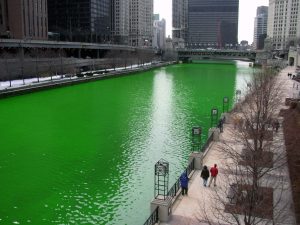 in Ireland, and celebrates the heritage and culture of the Irish in general. Celebrations generally involve public parades and festivals, dances, and the wearing of green attire or shamrocks. It is also a time when Christians who belong to liturgical denominations attend church services and historically the Lenten restrictions on eating and drinking alcohol were lifted for the day, which has encouraged and propagated the holiday’s tradition of alcohol consumption. That the day is tied to the church is not surprising, but the fact that the day is far more celebrated in the United States than it is in Ireland, is at the very least, a little bit strange. Nevertheless, for all who celebrate, Happy Saint Paddy’s Day!!
in Ireland, and celebrates the heritage and culture of the Irish in general. Celebrations generally involve public parades and festivals, dances, and the wearing of green attire or shamrocks. It is also a time when Christians who belong to liturgical denominations attend church services and historically the Lenten restrictions on eating and drinking alcohol were lifted for the day, which has encouraged and propagated the holiday’s tradition of alcohol consumption. That the day is tied to the church is not surprising, but the fact that the day is far more celebrated in the United States than it is in Ireland, is at the very least, a little bit strange. Nevertheless, for all who celebrate, Happy Saint Paddy’s Day!!
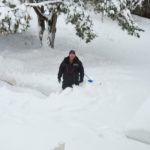

 Sometimes, the “best laid plans” turn into the biggest unplanned event. Bob and I take a trip to Thermopolis, Wyoming each year to celebrate our anniversary. Thermopolis is a dinky little town with very little to do, except that it has amazing hot springs she that adds up to great mineral water soaks that are terrific for the body. We also take wonderful walks along the trail that is set up on the Bighorn River, which flows through town. It is a peaceful tradition that we love to continue. Nevertheless, sometimes life can throw you a curve ball.
Sometimes, the “best laid plans” turn into the biggest unplanned event. Bob and I take a trip to Thermopolis, Wyoming each year to celebrate our anniversary. Thermopolis is a dinky little town with very little to do, except that it has amazing hot springs she that adds up to great mineral water soaks that are terrific for the body. We also take wonderful walks along the trail that is set up on the Bighorn River, which flows through town. It is a peaceful tradition that we love to continue. Nevertheless, sometimes life can throw you a curve ball.
Bob and I have both been snowed in during our lifetimes, but this storm was still something new to us, because 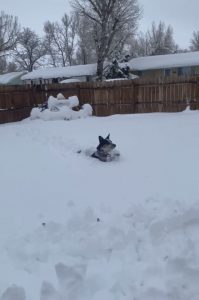

 we are not snowed in. We are snowed out!!! Thermopolis got no snow at all, only a sprinkling of rain, but in Casper, which is home, it is a very different story. I have see n measurements of 18″ to 24″, and I’m sure it could be more by now. The roads in and out of Casper are closed, and since we are in Thermopolis, where there is no snow, we are not snowed in, but we are snowed out of Casper. It is a matter of the fact that you can’t get there from here…at least not today.
we are not snowed in. We are snowed out!!! Thermopolis got no snow at all, only a sprinkling of rain, but in Casper, which is home, it is a very different story. I have see n measurements of 18″ to 24″, and I’m sure it could be more by now. The roads in and out of Casper are closed, and since we are in Thermopolis, where there is no snow, we are not snowed in, but we are snowed out of Casper. It is a matter of the fact that you can’t get there from here…at least not today.
I can’t say that I am exactly heartbroken about having to stay at least an extra day in Thermopolis. In fact, I’m hoping that a lot of the snow will melt before we get home. That would simply not hurt my feelings one bit. I have been talking to my sisters, Cheryl Masterson, Alena Stevens, and Allyn Hadlock; and my daughter, Corrie Petersen and grandson, Chris Petersen in Casper; and one sister, Caryl Reed in Rawlins, and they have graciously provided me with what I cannot see here. Tons and tons of snow!! The pictures of all the work trying to dig out, and the futility of such a venture in most cases, are shocking. It’s hard for me to fathom 

 the amount of snow from here, but I can say that it is massive. Even my niece, Lindsay Moore in Laramie, and my nieces, Liz Masterson, and Jenny Spethman in Casper, have added to the amount of pictures that have told the story of this huge snow day. It is truly a kid’s dream, and for those who couldn’t go to work today and won’t be tomorrow, it isn’t the most horrible news either.
the amount of snow from here, but I can say that it is massive. Even my niece, Lindsay Moore in Laramie, and my nieces, Liz Masterson, and Jenny Spethman in Casper, have added to the amount of pictures that have told the story of this huge snow day. It is truly a kid’s dream, and for those who couldn’t go to work today and won’t be tomorrow, it isn’t the most horrible news either.
 Periodically, problems occur with various planes, and they have to be addressed. In 1957, British European Airways flight 411, a Viscount 701 crashed at Manchester, killing 22 people. The plane came down on the edge of Manchester Ringway Airport very close to a housing estate on March 13, 1957. The Viscount 701 series was only four years old, and so a crash warranted a look at all the planes in the series. It was decided to pull about 25 jets while a special examination was carried out on the aircraft’s flap operating mechanism.
Periodically, problems occur with various planes, and they have to be addressed. In 1957, British European Airways flight 411, a Viscount 701 crashed at Manchester, killing 22 people. The plane came down on the edge of Manchester Ringway Airport very close to a housing estate on March 13, 1957. The Viscount 701 series was only four years old, and so a crash warranted a look at all the planes in the series. It was decided to pull about 25 jets while a special examination was carried out on the aircraft’s flap operating mechanism.
Not wanting to cause a panic, a statement was issued on behalf of British European Airways that said: “This is purely a precautionary measure and it is expected that the Viscount 701 fleet will be back in service in a few days. As a result of this decision a number of BEA’s services will be liable to delay or cancellation during the next few days.” While a British European Airways official denied that  the 701s had been grounded, the public was still skeptical. Grounding is much more serious than simply looking into a problem. Grounding can cause a panic with the companies who have purchased a plane, because most automatically assume that it will be permanent. “Grounding implies an official instruction from the Ministry of Civil Aviation or Air Registration Board. But in this case the aircraft have only been withdrawn from service by agreement for a check to be carried out,” he said. They had to do something about this situation. Fifteen passengers and five crew were killed when a BEA Viscount crashed on March 13. Two people also died on the ground as the aircraft struck one of the houses.
the 701s had been grounded, the public was still skeptical. Grounding is much more serious than simply looking into a problem. Grounding can cause a panic with the companies who have purchased a plane, because most automatically assume that it will be permanent. “Grounding implies an official instruction from the Ministry of Civil Aviation or Air Registration Board. But in this case the aircraft have only been withdrawn from service by agreement for a check to be carried out,” he said. They had to do something about this situation. Fifteen passengers and five crew were killed when a BEA Viscount crashed on March 13. Two people also died on the ground as the aircraft struck one of the houses.
The Viscount was making its final approach for landing when it veered and crashed into a field. The crash made  no sense at first. They had to find out why it happened. Eye-witnesses spotted engines from the aircraft in gardens, yards away from the wreckage…like they had fallen off. British European Airways Flight 411 was on approach to Manchester Airport after a flight from Amsterdam Schiphol International Airport when it crashed and hit a house in Wythenshawe. The investigation into the crash of Flight 411 found that the probable cause of the crash was metal fatigue in the bottom bolt securing the starboard wing number 2 flap unit. The aileron locked when number 2 flap unit became detached from the wing trailing edge.
no sense at first. They had to find out why it happened. Eye-witnesses spotted engines from the aircraft in gardens, yards away from the wreckage…like they had fallen off. British European Airways Flight 411 was on approach to Manchester Airport after a flight from Amsterdam Schiphol International Airport when it crashed and hit a house in Wythenshawe. The investigation into the crash of Flight 411 found that the probable cause of the crash was metal fatigue in the bottom bolt securing the starboard wing number 2 flap unit. The aileron locked when number 2 flap unit became detached from the wing trailing edge.
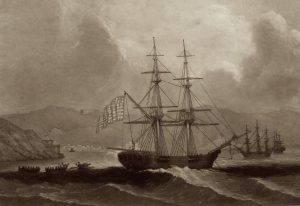 In 1799, in an area of the Caribbean Sea that had been listed as off limits for American ships, the English cutter, Sparrow intercepted the American brig, Nancy. The Nancy was in a place they should not have been, but the captain, Thomas Briggs produced papers claiming the ship was owned by a Dutchman. The captain of the Sparrow was skeptical, suspecting a smuggler. The problem was that he lacked evidence as to the true status of the Nancy, or the real reason for her trip. Due to his doubts about status and a lack of trust of the Nancy’s captain, the Sparrow’s captain sent Briggs to Jamaica to have his case heard by the vice-admiralty.
In 1799, in an area of the Caribbean Sea that had been listed as off limits for American ships, the English cutter, Sparrow intercepted the American brig, Nancy. The Nancy was in a place they should not have been, but the captain, Thomas Briggs produced papers claiming the ship was owned by a Dutchman. The captain of the Sparrow was skeptical, suspecting a smuggler. The problem was that he lacked evidence as to the true status of the Nancy, or the real reason for her trip. Due to his doubts about status and a lack of trust of the Nancy’s captain, the Sparrow’s captain sent Briggs to Jamaica to have his case heard by the vice-admiralty.
It turns out the captain of the Sparrow was not wrong in his doubts. Two days later, another English ship, the Ferret, caught a large shark near the coast of Haiti. When the cut the fish open, they found in its belly the papers of the American ship Nancy. Apparently, the Nancy’s captain, Thomas Briggs had thrown them overboard before getting false Dutch papers in Curacao. It was simply a fluke that the  Ferret somehow managed to catch the very shark that ate the real papers. I suppose that if the Nancy’s captain had used any common sense at all, he would have burned the papers, and then thrown the ashes overboard. The likelihood of having any useable paperwork after they were burned, would be extremely slim. The valid papers for the Nancy were dubbed the “shark papers.” They were produced in court, and the Nancy and her cargo were confiscated.
Ferret somehow managed to catch the very shark that ate the real papers. I suppose that if the Nancy’s captain had used any common sense at all, he would have burned the papers, and then thrown the ashes overboard. The likelihood of having any useable paperwork after they were burned, would be extremely slim. The valid papers for the Nancy were dubbed the “shark papers.” They were produced in court, and the Nancy and her cargo were confiscated.
The Nancy truly was an American sailing vessel, even though the captain tried to hide that fact. It was a type of ship noted in sources as either a brig or a brigantine, and it had been chartered to transport war supplies during the American Revolutionary War. When Michael Fitton, captain of the schooner Ferret, tender to HMS Abergavenny, cruised the Mona Passage in company with Sparrow, commanded by Mr Whylie, the two accidentally separated for a few days. On rejoining, Fitton invited Whylie by signal to come to breakfast, and  while waiting caught a large shark that was under the stern. In its stomach was a packet of papers relating to an American brig Nancy. When Whylie came on board, he mentioned that he had detained an American brig called Nancy. Fitton said that he had her papers. A shocked Whylie exclaimed, “Papers? Why, I sealed up her papers and sent them in with her.” “Just so, those were her false papers; here are her real ones,” replied Fitton. Proof positive. The fate of the Nancy and her captain were sealed. The shark’s jaws were set up on shore, with the inscription, “Lieutenant Fitton recommends these jaws for a collar for neutrals to swear through.” The papers are in the museum of the Royal United Service Institution.
while waiting caught a large shark that was under the stern. In its stomach was a packet of papers relating to an American brig Nancy. When Whylie came on board, he mentioned that he had detained an American brig called Nancy. Fitton said that he had her papers. A shocked Whylie exclaimed, “Papers? Why, I sealed up her papers and sent them in with her.” “Just so, those were her false papers; here are her real ones,” replied Fitton. Proof positive. The fate of the Nancy and her captain were sealed. The shark’s jaws were set up on shore, with the inscription, “Lieutenant Fitton recommends these jaws for a collar for neutrals to swear through.” The papers are in the museum of the Royal United Service Institution.
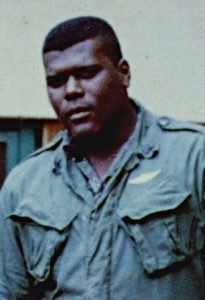 Combat diving…yes, that’s a real thing. Navy divers are used in ships maintenance, marine construction and salvage, demolition and mine clearance, and special forces. Army divers may be used in engineering activities such as bridge construction and demolition, and by special forces units. I guess that when I considered combat diving, I thought of underwater battles, and once in a while, that was the case. One case I heard of recently is that of Robert Hughes. Sergeant Hughes served as the Dive NCO for First Force Recon Company during 1967 to 1968. Born September 26, 1951, Hughes grew into a tall muscular man, and that helped him in the performance of his duties. During the Vietnam War, it seems that while divers had jobs to do routinely below the surface of the water, the Vietcong had a tendency to try to sabotage the divers, and that’s when they knew what real combat diving was.
Combat diving…yes, that’s a real thing. Navy divers are used in ships maintenance, marine construction and salvage, demolition and mine clearance, and special forces. Army divers may be used in engineering activities such as bridge construction and demolition, and by special forces units. I guess that when I considered combat diving, I thought of underwater battles, and once in a while, that was the case. One case I heard of recently is that of Robert Hughes. Sergeant Hughes served as the Dive NCO for First Force Recon Company during 1967 to 1968. Born September 26, 1951, Hughes grew into a tall muscular man, and that helped him in the performance of his duties. During the Vietnam War, it seems that while divers had jobs to do routinely below the surface of the water, the Vietcong had a tendency to try to sabotage the divers, and that’s when they knew what real combat diving was.
While hunting the Vietcong fighters, it was not uncommon for US troops to observe the Vietnamese flee underwater and never reemerge. It was proof that they had made their escape into one of the countless tunnel entrances located below the water. The US had scuba trained Force Recon Marines, who would comb the river bed looking for bodies, equipment caches, or 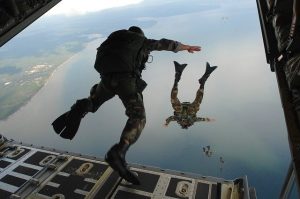 enemy tunnels. It was during one such mission that Hughes fought the battle that would earn him his reputation.
enemy tunnels. It was during one such mission that Hughes fought the battle that would earn him his reputation.
Hughes had always been called a “gentle giant” by the Marines he served with. Of course, it was his size that earned him the giant part…Hughes towered over many of his peers. He was a gentle man, but all that disappeared when he was engaged in a battle with the VC fighters. Then he became a virtual tiger. On one dive mission, Hughes was given the task of locating an underwater tunnel. He was searching through the murky darkness. As he felt his way along a bank with one hand, Kabar knife ready in the other. He located what appeared to be the tunnel entrance, and suddenly an enemy diver shot out of the hole. A fierce battle ensued. It was a fight for his life. Hughes knew that he had to kill or be killed. Submerged and hampered by limited visibility, Hughes fought to get control of 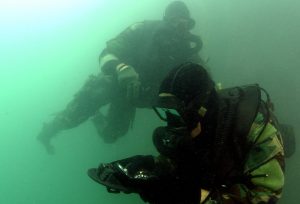 his enemy. Finally, he gained the upper hand. Hughes wrapped his legs around his enemy and pulled him in close. Then he spit out his regulator, lunged forward, and bit into the diver’s throat, ripping it out. The diver released his grip and Hughes finished the fight. This wasn’t the only “kill” to Hughes’ credit, but it was quite possible the most dramatic. Not many people have fought to the death by ripping out the throat of their enemy with their teeth. Hughes was a tiger in battle. One marine who served with him, said, “There was no one I would rather have as security underwater than Sergeant Hughes.” Hughes was an amazing soldier. Sergeant Robert “Gentle Giant” Hughes died on February 14, 1990.
his enemy. Finally, he gained the upper hand. Hughes wrapped his legs around his enemy and pulled him in close. Then he spit out his regulator, lunged forward, and bit into the diver’s throat, ripping it out. The diver released his grip and Hughes finished the fight. This wasn’t the only “kill” to Hughes’ credit, but it was quite possible the most dramatic. Not many people have fought to the death by ripping out the throat of their enemy with their teeth. Hughes was a tiger in battle. One marine who served with him, said, “There was no one I would rather have as security underwater than Sergeant Hughes.” Hughes was an amazing soldier. Sergeant Robert “Gentle Giant” Hughes died on February 14, 1990.
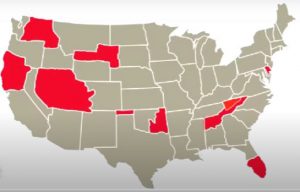
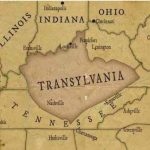 When we think of how the 50 states of the United States were formed, we somehow think of an orderly process that followed a specific protocol, but in many ways, that was not the case. There are actually a number of states that were planned, or even in place for a time, but failed to continue to be or failed to form into states that exist today. These states were often formed out of conflict, when people didn’t like what they saw around them, and they decided to take matters into their own hand. Had they continued to exist, it would have felt normal, but in light of today’s United States, they would have been really strange. Even the names of these proposed states were rather strange.
When we think of how the 50 states of the United States were formed, we somehow think of an orderly process that followed a specific protocol, but in many ways, that was not the case. There are actually a number of states that were planned, or even in place for a time, but failed to continue to be or failed to form into states that exist today. These states were often formed out of conflict, when people didn’t like what they saw around them, and they decided to take matters into their own hand. Had they continued to exist, it would have felt normal, but in light of today’s United States, they would have been really strange. Even the names of these proposed states were rather strange.
Things like Westsylvania, Transylvania, Muskogee, and Deseret; make me wonder how they came up with this stuff. Of course many of us have heard of Transylvania, but it had nothing to do wit Dracula or any other vampire. Sorry if that disappoints some people. Transylvania’s name, meaning “across the woods” in Latin, stems from the university’s founding in the heavily forested region of western Virginia known as the 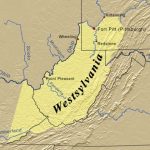
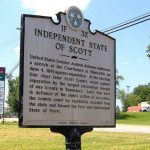 Transylvania Colony, which became most of Kentucky in 1792. The state was founded in 1775, and statehood removed in 1776, when Virginia when the Virginia General Assembly invalidated the Transylvania Purchase.
Transylvania Colony, which became most of Kentucky in 1792. The state was founded in 1775, and statehood removed in 1776, when Virginia when the Virginia General Assembly invalidated the Transylvania Purchase.
The proposed state of Westsylvania was located in what is now West Virginia, southwestern Pennsylvania, and small parts of Kentucky, Maryland, and Virginia. Westsylvania was proposed early in the American Revolution It would have been the fourteenth state in the newly formed United States, had it been recognized. In the final years of the Revolutionary War…in 1782, Hugh Henry Brackenridge, a Pittsburgh lawyer and strong supporter of the national government, convinced the Pennsylvania Assembly to declare that agitation for a separate state was treason, rendering the promotion of Westsylvania subject to the death penalty. Pennsylvania also sent secret agents, such as the Reverend James Finley, to work against the Westsylvania movement. According to historian Jack Sosin, “Finely’s efforts, the threat that the settlers’ land might be sold, and the cool reaction to the proposed new state by Congress finally quieted the Westerners.”
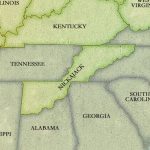
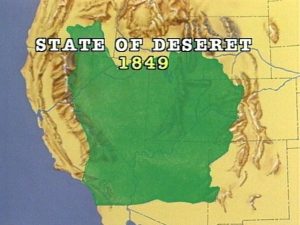 In all, there were about 12 proposed states that if ratified, would have changed the United States as we know it. I can’t imagine having 62 states, or living in a state called Absaroka, Delmarva, Scott, Nickajack, or Sequoyah. And while I was born in Superior, Wisconsin, I can’t imagine living in the state of Superior. And of course, Transylvania, Westsylvania, Lincoln, Muskogee, Deseret, or Franklin would be equally odd. While these “states” did exist for a time, I rather like our country just the way it is. Fifty states is a nice round number.
In all, there were about 12 proposed states that if ratified, would have changed the United States as we know it. I can’t imagine having 62 states, or living in a state called Absaroka, Delmarva, Scott, Nickajack, or Sequoyah. And while I was born in Superior, Wisconsin, I can’t imagine living in the state of Superior. And of course, Transylvania, Westsylvania, Lincoln, Muskogee, Deseret, or Franklin would be equally odd. While these “states” did exist for a time, I rather like our country just the way it is. Fifty states is a nice round number.

